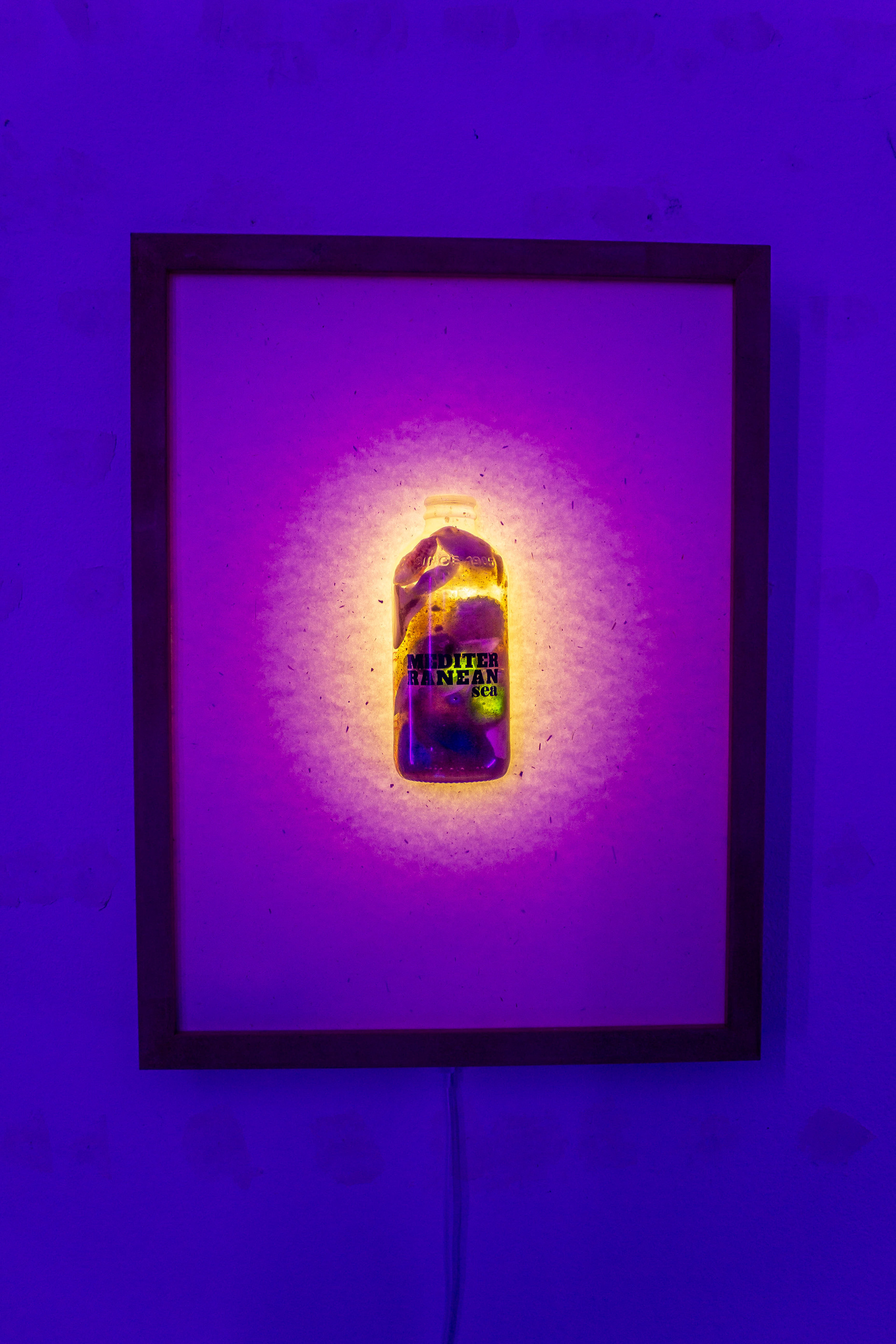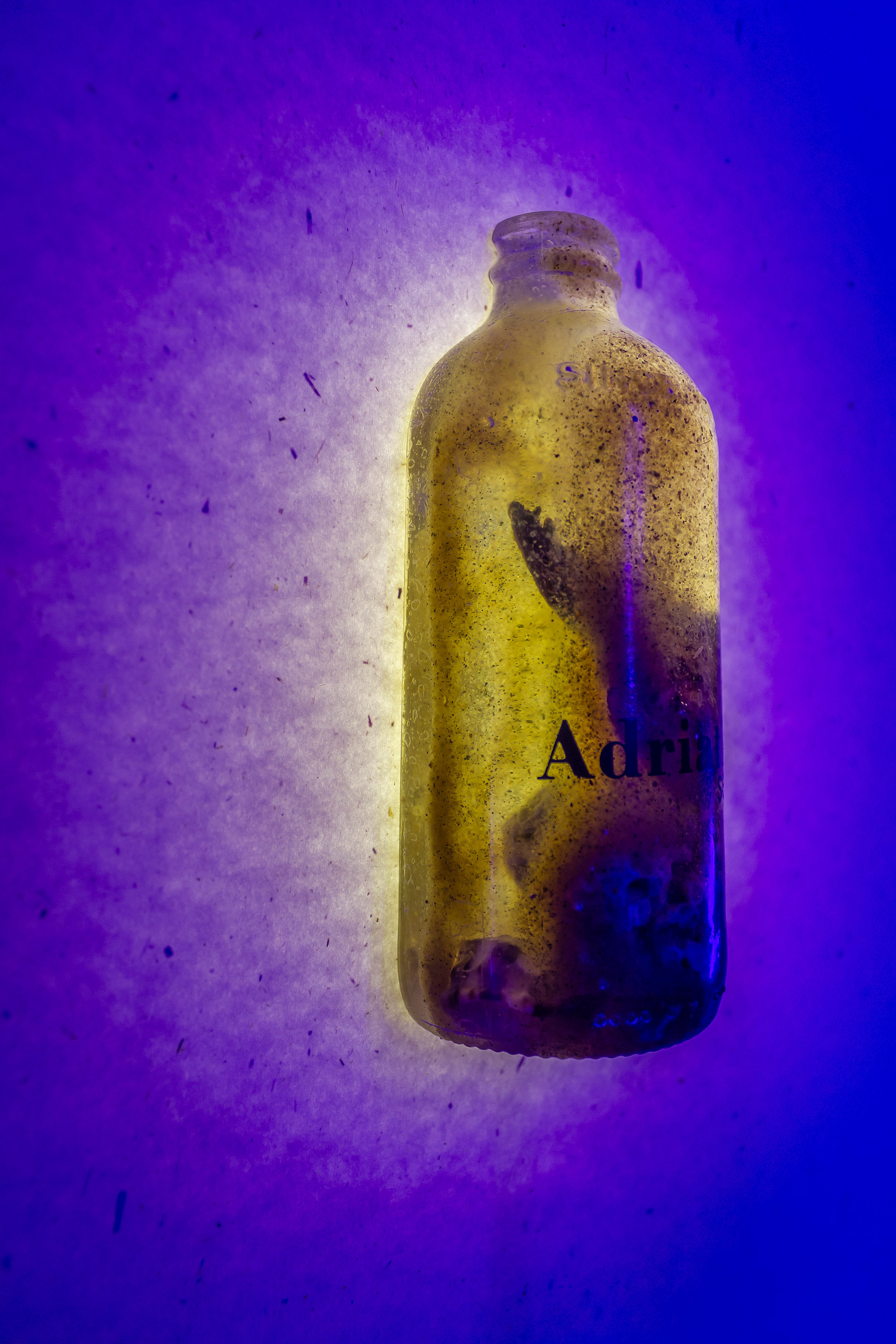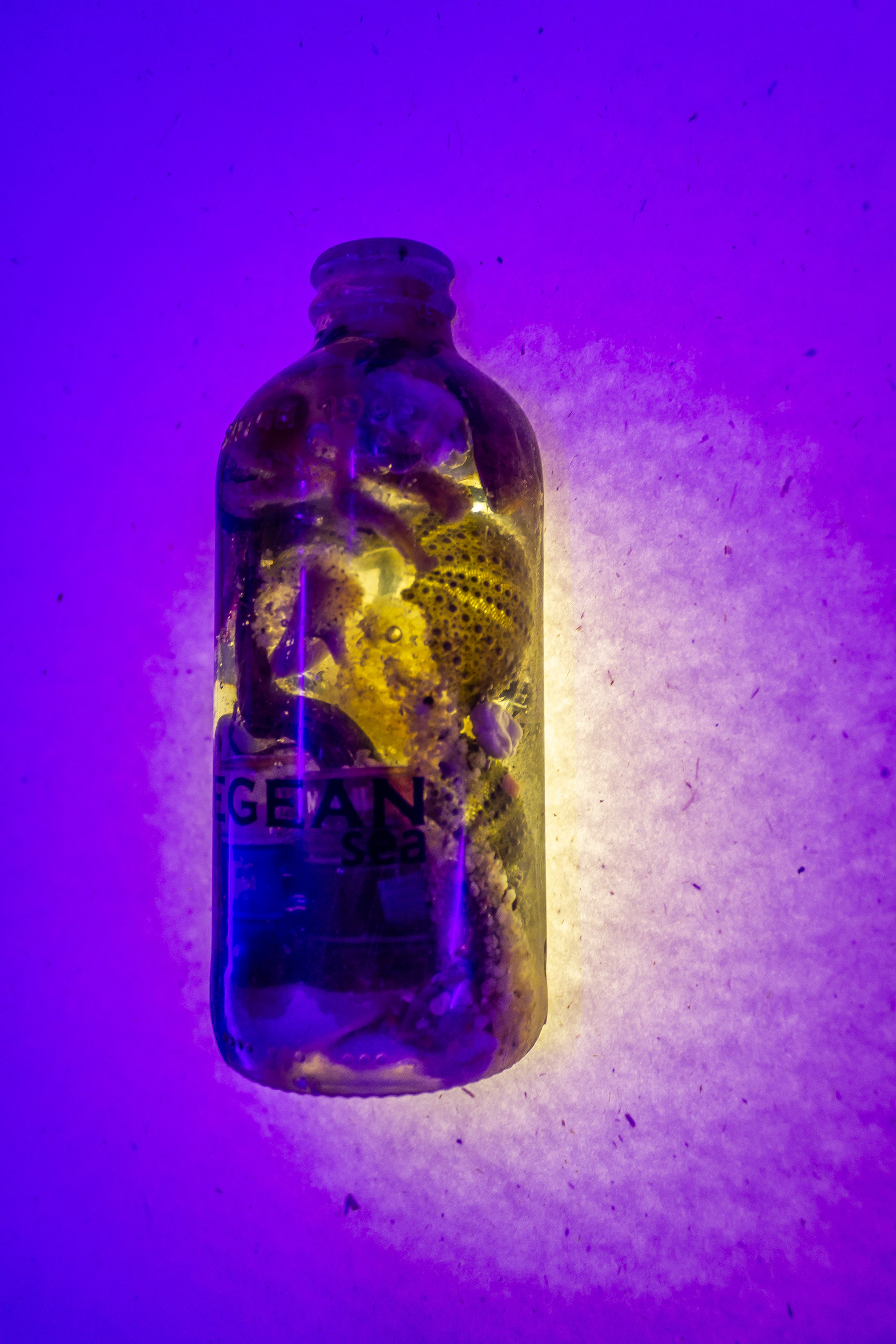

















MASSAGE IN THE BOTLE.
Resin, found materilas, digital print, serigraphy, paper, frames from recycled light,
The Great Pacific Garbage Patch is a phenomenon discovered in 1997 by Charles Moore. It is made of 99.9 percent plastic waste in various forms: fishing nets, plastic bottles, caps, foil. Most of this waste is photo-degradable. This means that it does not decompose completely, but breaks down into smaller fractions in a certain environment or under certain conditions. According to estimates, it is 1.6 million square meters of plastic. Statistics show that 92 percent. of the area of the first observed Pacific Garbage Patch are large objects, and the remaining 8 percent. - microplastics, i.e. waste smaller than 5 millimeters. Drifting in the Pacific Ocean between California and Hawaii and Hawaii and Japan, garbage islands are a phenomenon that is a global problem, posing a threat to flora and fauna. The researchers say the garbage patches are constantly growing, and sea currents play a large role in the collection and accumulation of waste in the area. It was the problem of waste in the ocean and water reservoirs as well as their movement and circulation that inspired the creation of the Message in a Bottle series. The materials that I used to embed in the resin, in the shape of bottles, come from different seas of the world. These are "souvenirs" brought by me from trips, thrown on the beaches and collected during walks, they are successively collected for later use and processing. Both travels, walks and the problem of plastic pollution itself, its breakdown into smaller fractions such as micro and nano plastic. The circulation of this material, from production, through the usefulness of the finished item, the state of waste, to the presence of its particles in living organisms, became the starting point